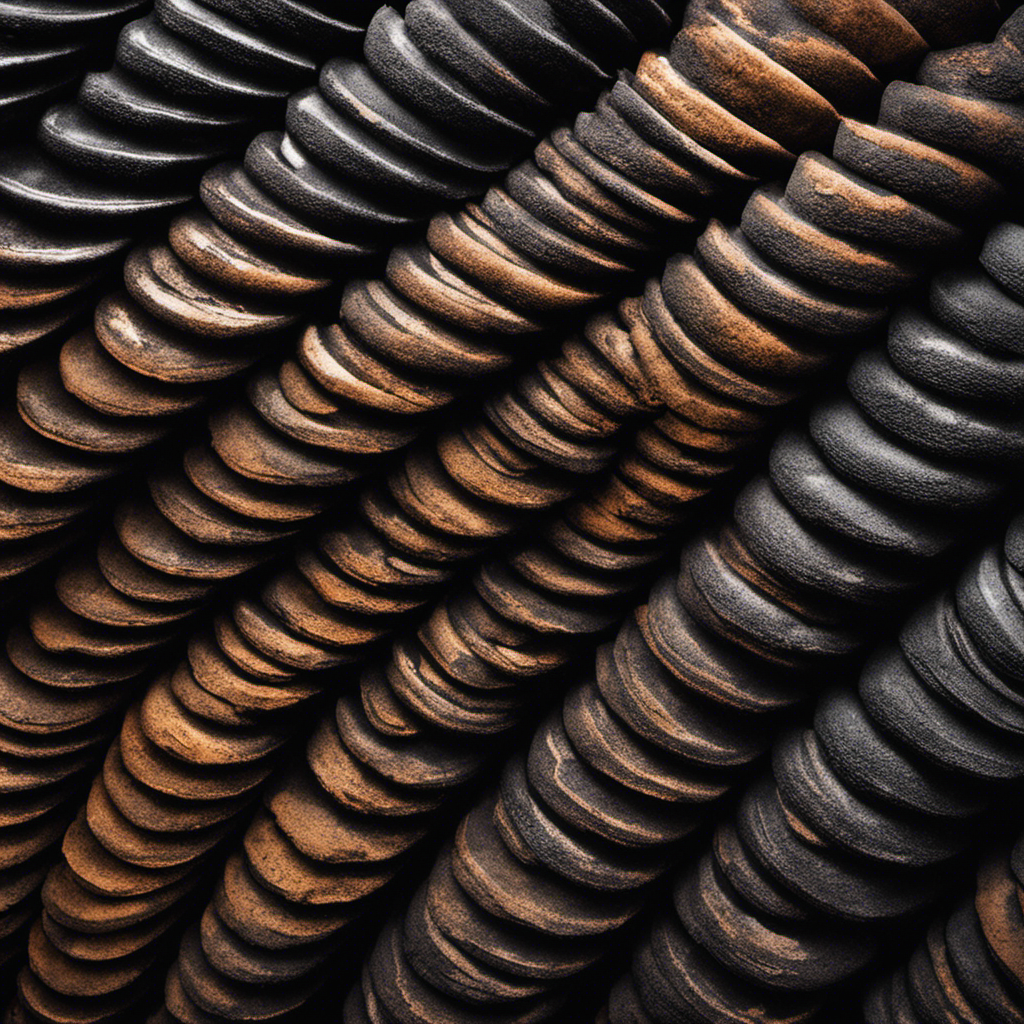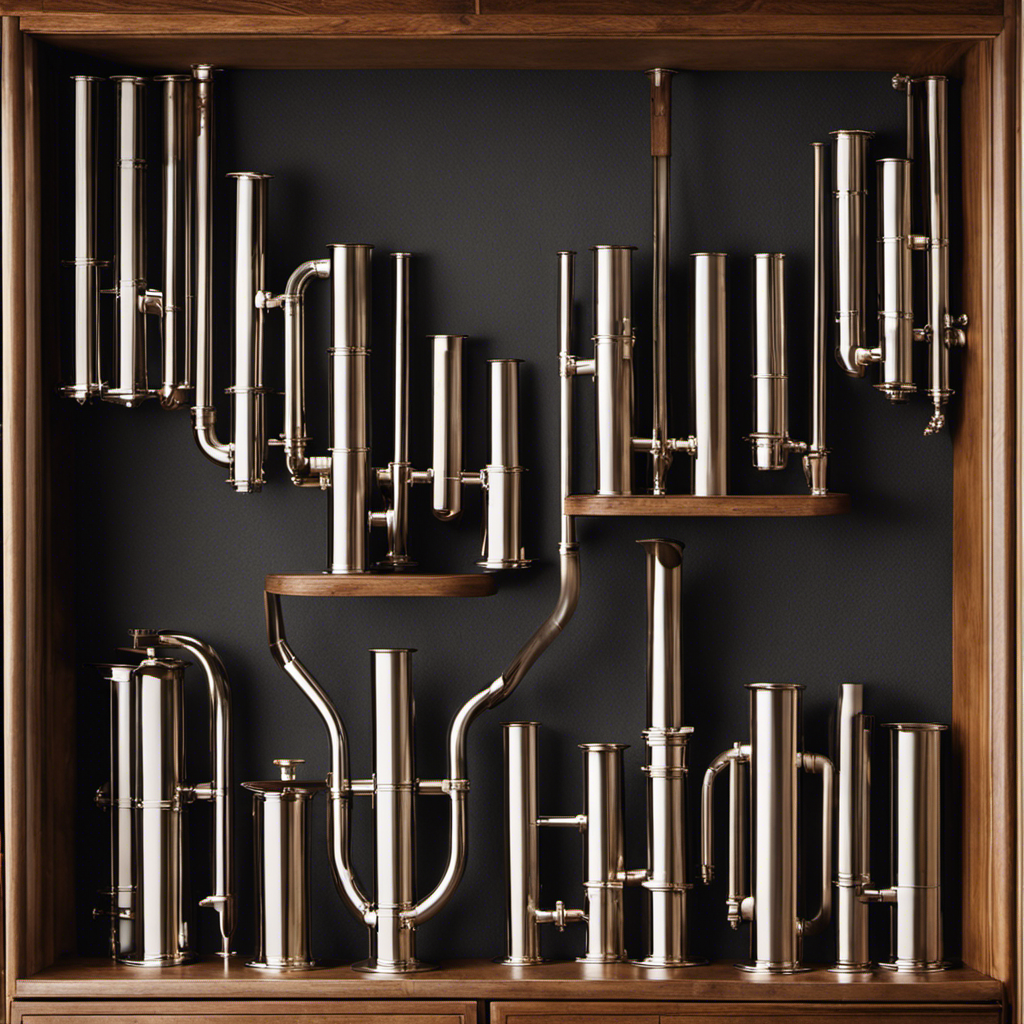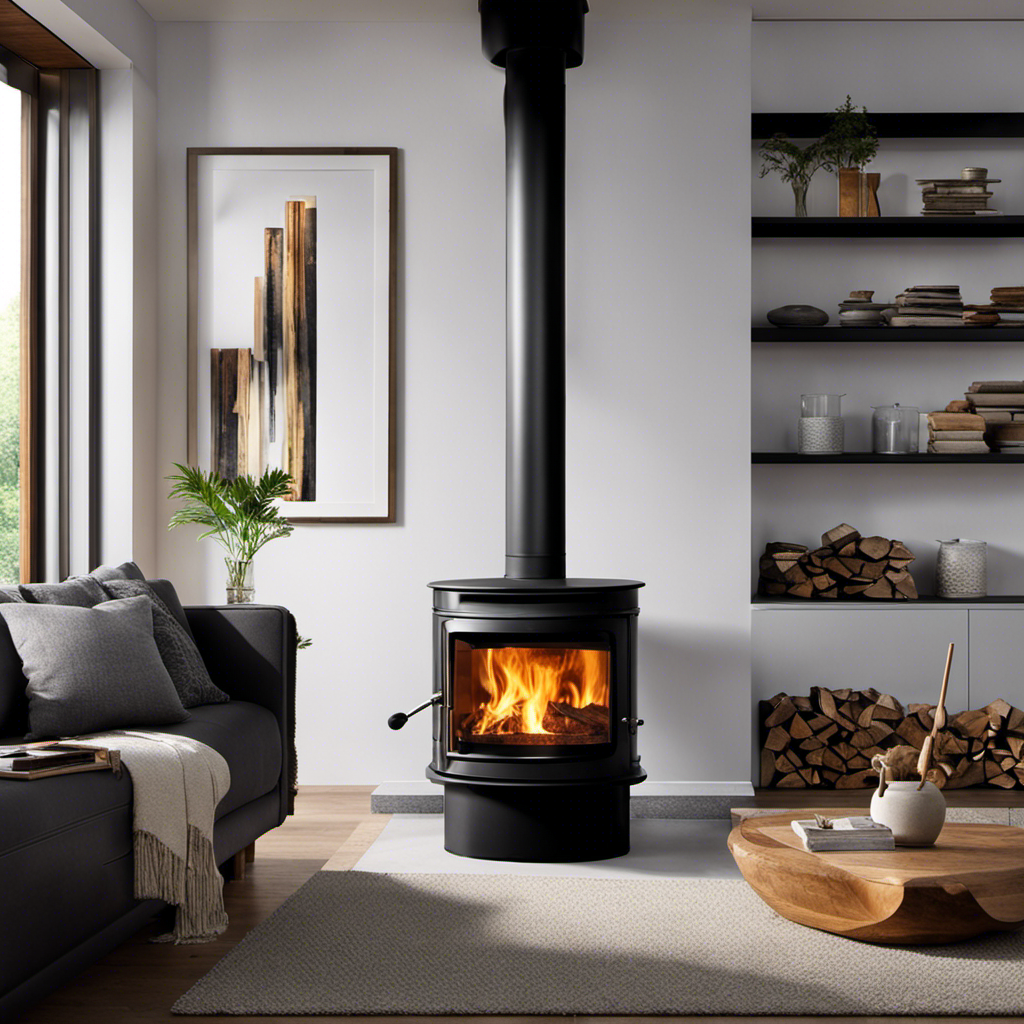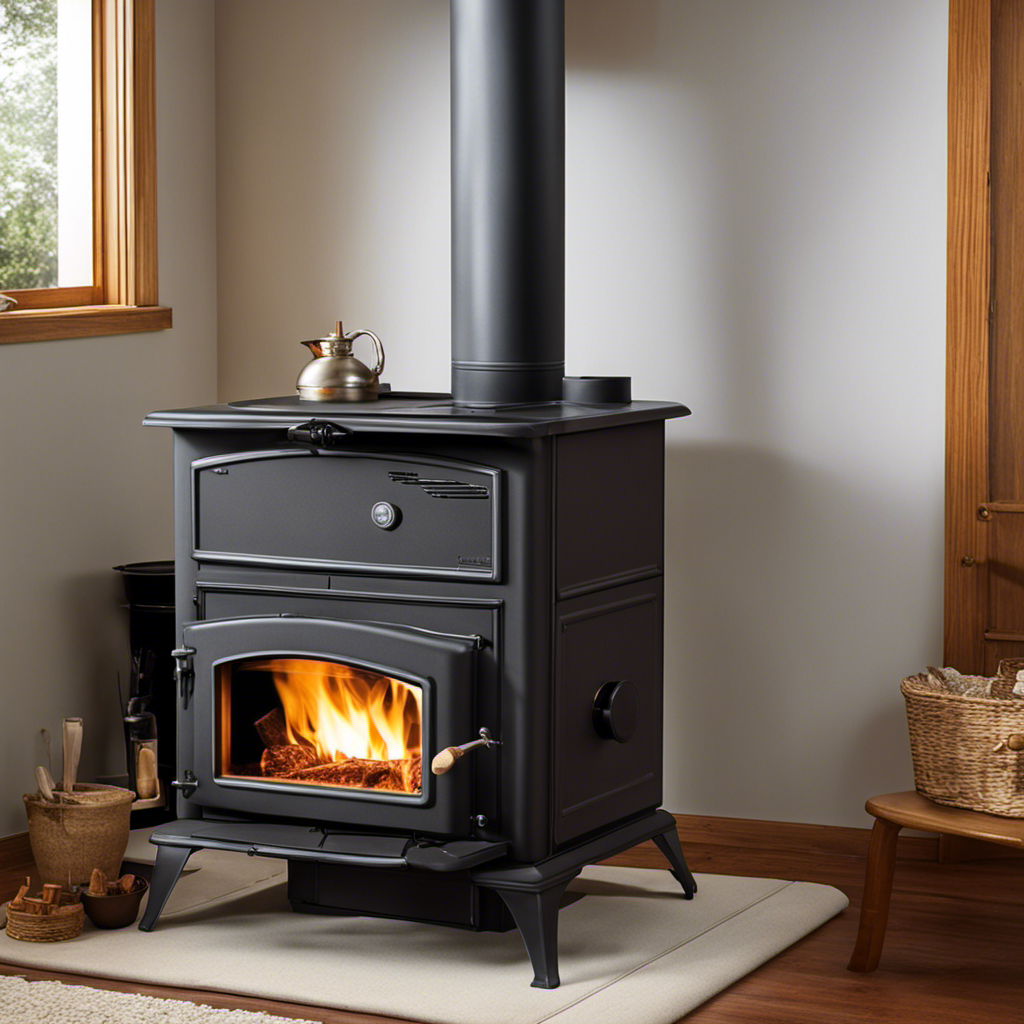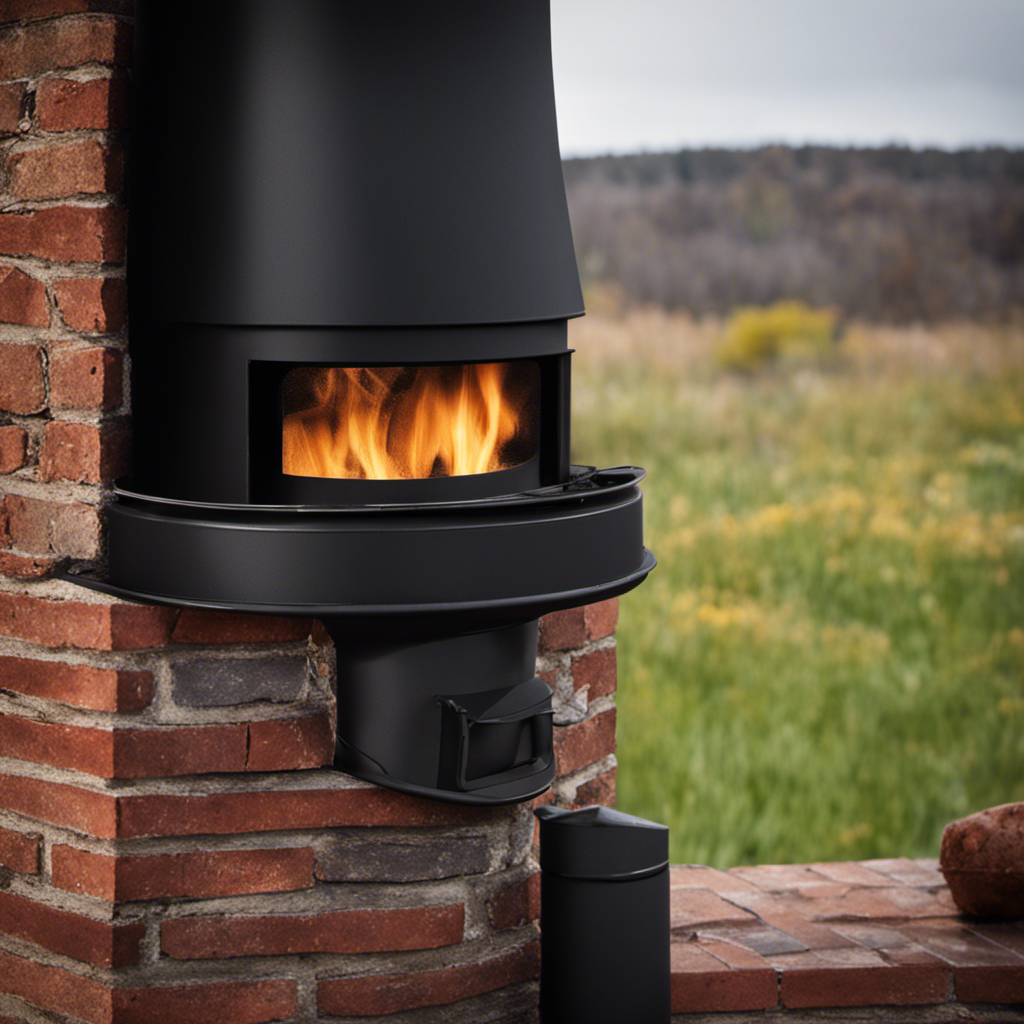As a homeowner, I have found that dealing with a leaky wood stove pipe can be just as frustrating as fixing a leaky faucet. The accumulation of creosote, which is often the cause of these leaks, can create significant hazards if not dealt with promptly.
In this article, I’ll delve into the various causes of creosote leaks in wood stove pipes, exploring the impact of poor ventilation, flue obstructions, and even wood quality.
Furthermore, I’ll provide effective cleaning and maintenance techniques to prevent these unwanted leaks.
Key Takeaways
- Creosote leaks in wood stove pipes can be caused by buildup of debris and soot, poor insulation, improper installation, and inadequate ventilation.
- Poor ventilation can lead to increased condensation and creosote accumulation, as well as restrict airflow and result in incomplete combustion, producing more smoke and moisture.
- Flue obstructions, such as debris and cracks, can contribute to creosote leakage, highlighting the importance of clearing debris, installing bird guards, inspecting for damage, and scheduling professional inspections.
- Wood quality and moisture content play a role in creosote formation, with higher wood density and lower moisture content leading to less creosote formation and more effective burning. Regular cleaning with a chimney brush, inspecting for damage, using creosote remover, and ensuring proper ventilation are important for preventing creosote leaks.
Common Causes of Creosote Leaks in Wood Stove Pipes
One common cause of creosote leaks in wood stove pipes is a buildup of debris and soot, which can lead to blockages and restrict the flow of smoke. This can occur due to poor insulation or improper installation of the pipe.
When the insulation is inadequate, the heat from the stove can escape into the surrounding areas, causing the smoke to cool down rapidly within the pipe. As a result, the creosote condenses and sticks to the inner walls of the pipe.
Improper installation can also contribute to creosote leaks, as it can lead to an improper draft and incomplete combustion, resulting in more creosote production.
Therefore, understanding the impact of poor ventilation on creosote buildup is crucial in preventing leaks and ensuring the safe and efficient operation of the wood stove.
Understanding the Impact of Poor Ventilation on Creosote Buildup
I can understand the impact of poor ventilation on creosote buildup, as it can lead to increased condensation and accumulation of creosote in the wood stove pipe. Poor ventilation can restrict the airflow within the stove, causing incomplete combustion of the wood. This incomplete combustion produces more smoke and moisture, which then condenses on the cooler surfaces of the stove pipe.
As the condensation forms, it mixes with the creosote, a byproduct of burning wood, resulting in a sticky and flammable substance. Over time, this creosote can build up and clog the pipe, increasing the risk of a chimney fire.
Proper ventilation is crucial to maintain a consistent and efficient burn, as it helps to channel the smoke and moisture out of the stove and prevents the condensation issues that contribute to creosote buildup.
Identifying and Addressing Flue Obstructions That Lead to Creosote Leakage
To prevent creosote leakage, it’s important to identify and address flue obstructions that can lead to the buildup of this sticky substance. Here are some flue obstruction solutions and the importance of regular inspection:
-
Clearing debris: Regularly inspect your flue for any debris such as leaves, twigs, or animal nests that can obstruct the airflow. Remove them promptly to prevent creosote buildup.
-
Checking for bird guards: Install bird guards on your chimney cap to prevent birds from nesting inside your flue. Bird nests can obstruct the flue and increase the risk of creosote leakage.
-
Inspecting for cracks or damage: Regularly inspect your flue for any cracks or damage that can obstruct the proper flow of smoke and gases. Repair any issues promptly to maintain optimal airflow.
-
Scheduling professional inspections: Regularly schedule professional inspections of your chimney and flue to identify any potential obstructions or issues. Professionals can provide thorough cleaning and maintenance to prevent creosote leakage.
The Role of Wood Quality and Moisture Content in Creosote Formation
A key factor in creosote formation is the quality of wood and its moisture content. When burning wood in a stove, the wood density and combustion efficiency play a crucial role in determining the amount of creosote that is produced. Wood with a higher density tends to burn more efficiently, resulting in less creosote formation. Additionally, wood with a lower moisture content burns more effectively, reducing the likelihood of creosote build-up in the stove pipe.
| Wood Density | Combustion Efficiency | Creosote Formation |
|---|---|---|
| High | High | Low |
| High | Low | Medium |
| Low | High | Medium |
Effective Cleaning and Maintenance Techniques to Prevent Creosote Leaks
By regularly cleaning and inspecting the stove pipe, as well as using a chimney brush and creosote remover, you can effectively prevent leaks caused by creosote build-up. Here are some cleaning and maintenance techniques that can help keep your wood stove pipe in top condition:
-
Regular cleaning: Remove creosote deposits by using a chimney brush to scrub the inside of the pipe. This will help prevent the build-up that can lead to leaks.
-
Inspecting for damage: Check the stove pipe for any cracks, loose joints, or other signs of wear and tear. Repair or replace any damaged sections to maintain the integrity of the pipe.
-
Using creosote remover: Use a specially formulated creosote remover to break down and remove stubborn deposits. This will help maintain proper airflow and reduce the risk of leaks.
-
Proper ventilation: Ensure that your wood stove has adequate ventilation to minimize the formation of creosote. Good airflow will help prevent excessive build-up and potential leaks.
Frequently Asked Questions
Can I Use Any Type of Wood in My Wood Stove Without Worrying About Creosote Buildup?
I can use different types of wood for my wood stove without worrying about creosote buildup. There are safe wood options for wood stoves that minimize creosote formation and reduce the risk of pipe leakage.
How Often Should I Clean My Wood Stove Pipe to Prevent Creosote Leaks?
I make it a point to clean my wood stove pipe at least once a year to prevent creosote leaks. Poor insulation in my home can contribute to creosote buildup, so regular maintenance is crucial.
Are There Any Specific Signs or Symptoms That Indicate My Wood Stove Pipe Is Leaking Creosote?
Some signs and symptoms of a wood stove pipe leaking creosote may include a strong, smoky smell, visible black or brown residue on the pipe, and increased amounts of creosote buildup during cleaning.
Can Poor Insulation in My Home Contribute to Creosote Buildup in the Wood Stove Pipe?
Poor home insulation can contribute to creosote buildup in the wood stove pipe. Inadequate insulation causes cooler temperatures in the flue, leading to condensation of the flue gases and the formation of creosote.
Are There Any Alternative Heating Options That Don’t Produce Creosote and Therefore Eliminate the Risk of Creosote Leaks in the Wood Stove Pipe?
There are alternative heating options available that do not produce creosote, eliminating the risk of creosote leaks in the wood stove pipe. These creosote-free fuel alternatives can provide a safer and cleaner heating solution.
Conclusion
In conclusion, understanding the causes of creosote leaks in wood stove pipes is crucial for preventing potential hazards. Regular cleaning, proper ventilation, and using dry, seasoned wood can significantly reduce the risk of creosote leakage. Did you know that approximately 25% of residential fires in the United States are caused by creosote buildup in chimneys? By following these maintenance techniques, you can enjoy a safe and efficient wood stove experience.
Logan’s affair with adventure began in childhood. He hailed from a small town where vast forests bordered one side and endless shores stretched on the other. His days were spent exploring uncharted woods, climbing tall trees, or listening to the tales of old sailors. This early immersion in a world brimming with stories and mysteries became the foundation of his passion for writing.

